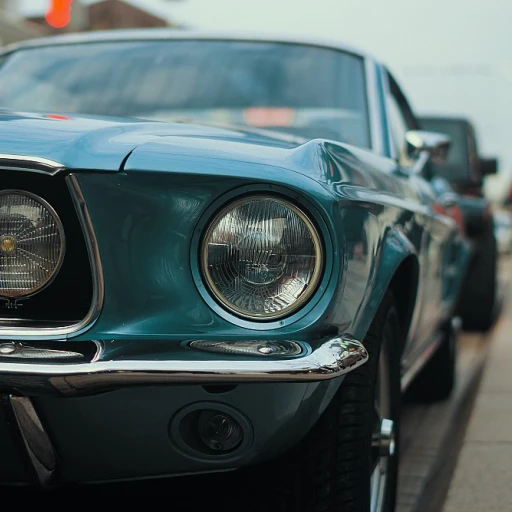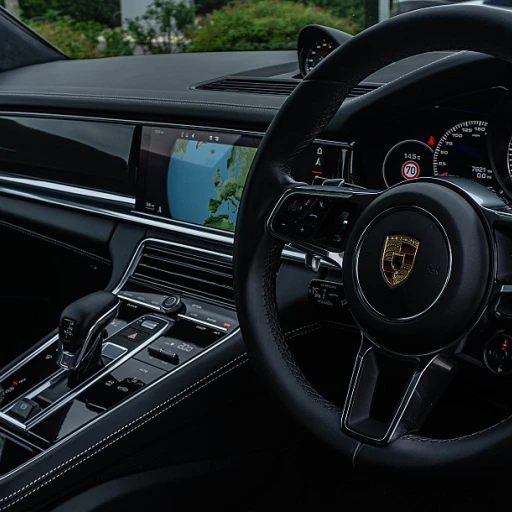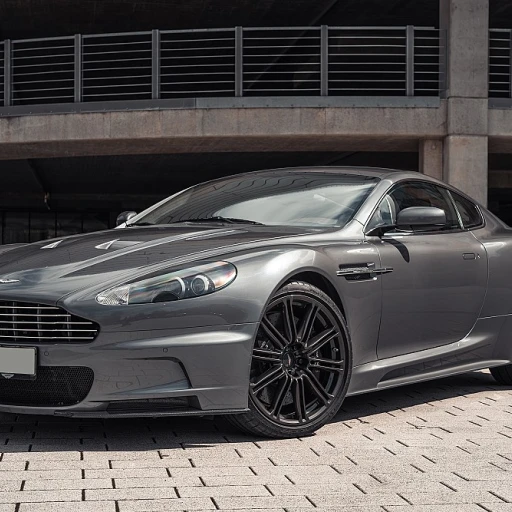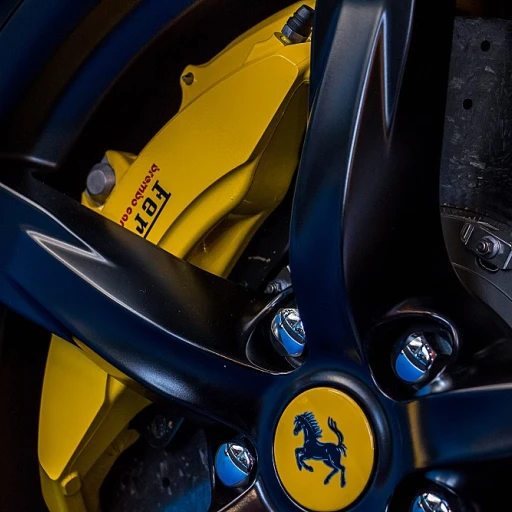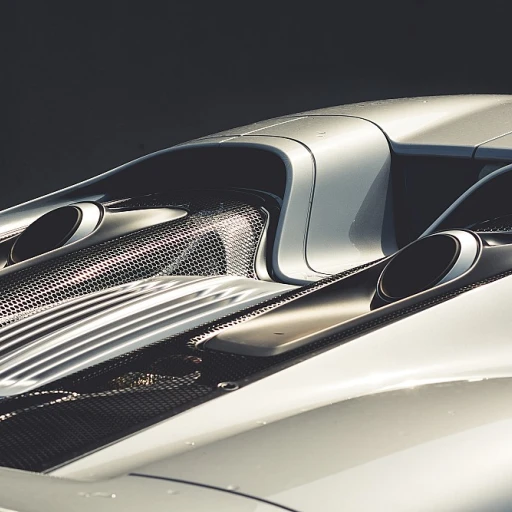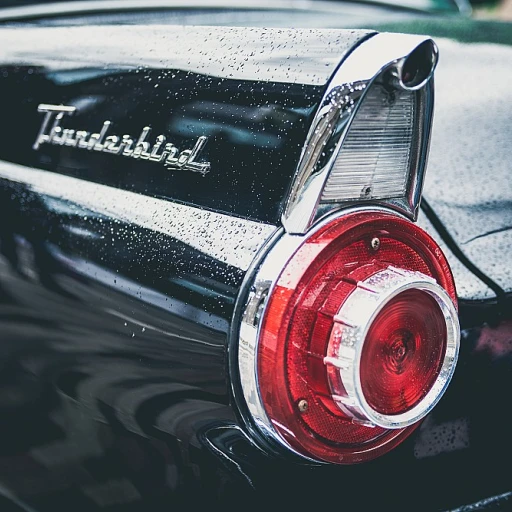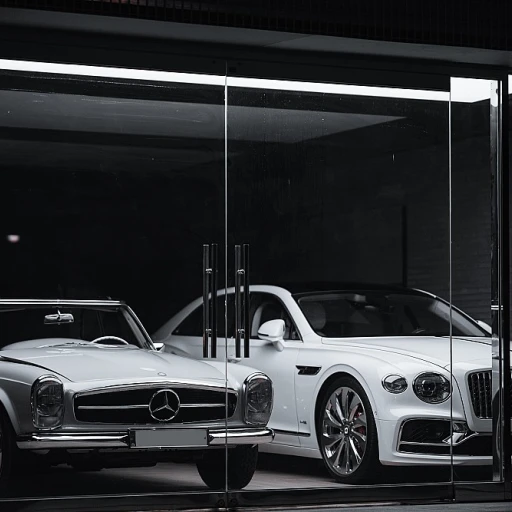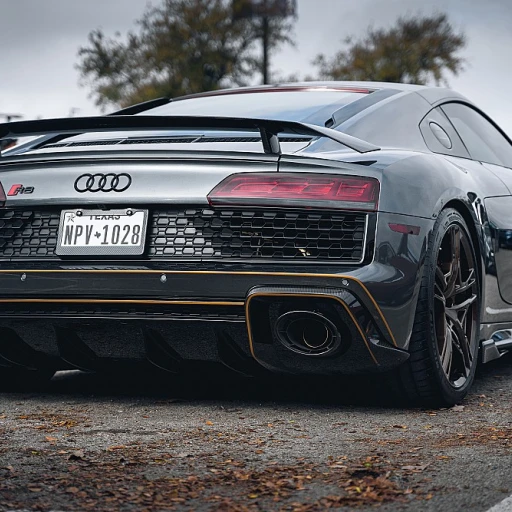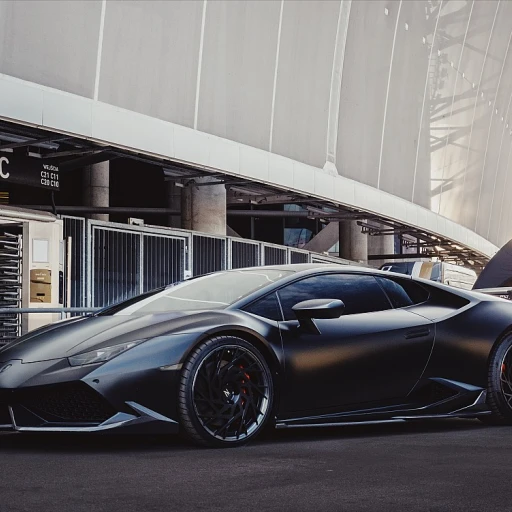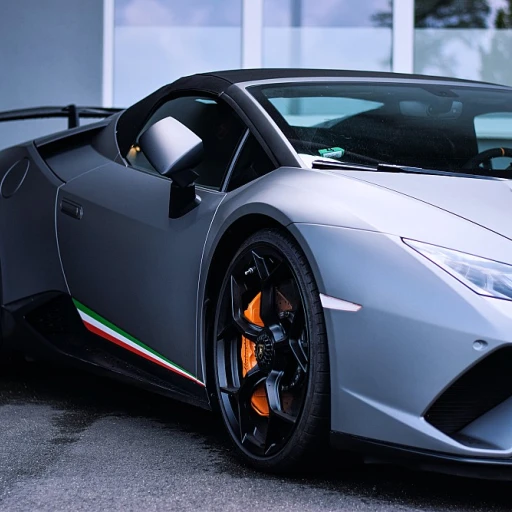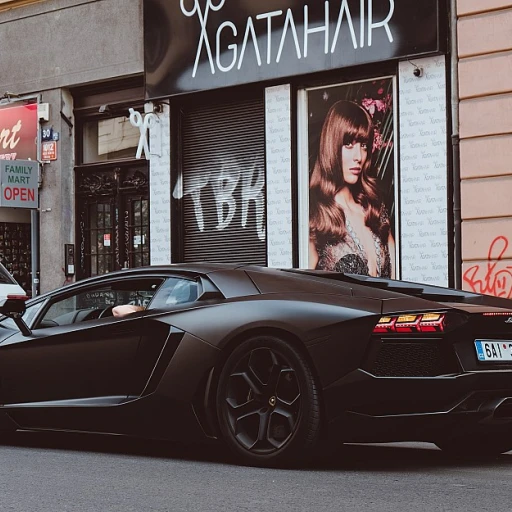
The Evolution of the Whale Tail Design
Historical Roots and Evolutionary Shift
The iconic whale tail design of the Porsche has undergone a fascinating evolution since its inception. Initially introduced in the early 1970s, the distinct rear spoiler was a defining element for the turbo models, specifically the Porsche 930. Its primary function was to enhance aerodynamics by extending the car's silhouette, thereby increasing the downforce on the rear axle. This aerodynamic advantage was crucial for the high-performance turbocharged engines of the era. From the first design, which some enthusiasts likened to the ‘tea tray’ style, the whale tail evolved to embody a broader, more pronounced presence. The design not only performed functionally to balance the car but also marked its visual appeal, setting the Porsche apart from contemporaries, including other sport classic models. Over time, Porsche introduced variations such as the ‘ducktail’ spoiler for the Carrera series, illustrating a continuous refinement of the brand's identity—each tail iteration enhancing performance while maintaining the unique silhouette synonymous with the Porsche legacy. The whale tail was not merely about aesthetics, though it did offer an alluring rear-view spectacle. The factory design was a meticulous balance of form and function, blending seamlessly into the overall architecture of the car. Each iteration involved a significant engineering effort that even incorporated materials like rubber in the spoiler for durability and functionality. Owners of the current models can share their hobbyist admiration for these historic posts, appreciating the legacy embedded in every line and curve of their tails. It's fascinating to see how this design has influenced the current trends within both Porsche's lineup and the broader automotive industry. For enthusiasts, the tale of the whale tail is not merely a story of a design but a narrative of innovation, cultural impact, and an ever-evolving legacy that continues to reverberate through every Porsche turbo, Carrera, and beyond. Explore more about the enduring legacy and evolution of sports car designs in the Sports Car International Magazine.Engineering Excellence Behind the Whale Tail
Precision Engineering of the Notable Tail
The Porsche whale tail design is not merely a visual hallmark but a marvel of engineering brilliance. From the factory floor where the first whale tail of the Porsche Carrera was meticulously crafted, to the seamless integration with the turbo variants, precision and performance have always been at the heart of its development. The primary function of this unique tail, beyond its aesthetic appeal, is to improve aerodynamics. The factory-engineered whale tail aids in generating downforce, which is crucial for maintaining traction at high speeds. This aerodynamic advantage not only stabilizes the rear of the car but also enhances overall handling, especially in the turbo models of the era. What sets the Porsche whale tail apart from other tails, like the ducktail spoiler, is its combination of form and functionality. Where other designs might prioritize style, the whale tail balances both elements to offer an optimal driving experience. Unlike the more understated duck tail, the whale tail's larger surface area and signature rubber posts contribute significantly to improved airflow and reduced lift. The iconic tea tray shape of the turbo whale tail further distinguishes itself by featuring enhanced cooling capabilities. With the inclusion of vents on the deck lid, the design permits better air circulation to the rear engine, a vital characteristic for the large turbo engines of models like the Porsche Turbo Carrera. Maintaining this engineering feat comes with its challenges. As one might expect, the high-performance rubber and other specific parts of the whale tail require regular upkeep to preserve their structural integrity and aerodynamic function. Owners often have to source original parts meticulously to ensure the authenticity and performance of their Carrera whale tails remain untarnished. Moreover, the transition from the original whale tail to the more current designs in the Porsche lineup showcases the evolution of sports car engineering. Nevertheless, the factory introduction of the whale tail established a benchmark that continues to inspire new iterations of tail spoilers, melding heritage with modern advances. To explore how leasing options could provide flexibility and advantages in maintaining such distinguished machines, read more about leasing advantages for performance cars.Cultural Impact and Iconic Status
The Whale Tail's Cultural Footprint
The Porsche whale tail is not merely an engineering feat; it has ascended into the realm of cultural iconography. This remarkable design, which graces models such as the Porsche Carrera and the Porsche Turbo, is renowned for its striking deck lid and signature rear spoiler that invokes the imagery of a whale's flukes. Beyond its aesthetic appeal, the whale tail underscores its significance in automotive culture. Indeed, the whale tail has become synonymous with the racing heritage embedded in Porsche's identity. For many, the sight of these tails conjures thrilling memories of the turbocharged heroes that once dominated race tracks. This particular spoiler design is a testament to Porsche's relentless pursuit of performance and prowess. Despite the advent of more modern aerodynamic solutions, enthusiasts and collectors alike continue to revere the whale tail for its historical and design appeal. As car enthusiasts reflect on the journey of this legendary spoiler, it's noteworthy how the Porsche factory's initial vision of the tail has evolved. Originally posted among other design marvels, it became an emblematic part of the Porsche Carrera and Turbo models. "Quote originally," a phrase often shared in car aficionados' circles, resonates with the cult following the design has garnered over the years—symbolizing both the mechanical might and the aesthetic sophistication of Porsche. The influence of the whale tail stretches beyond the automotive world, finding its way into popular culture, art, and fashion. These iconic design elements, along with the sport classic elegance, offer a view into Porsche's commitment to pushing the boundaries of automotive design without sacrificing its heritage. For a deeper exploration of how unique designs have cemented their status in the luxury car market, you might visit this cultural influence in luxury vehicles. This cultural impact not only elevates the status of whale tail models in the collector's market but also ensures that these cars remain highly sought after by discerning enthusiasts who value both design innovation and performance legacy. The journey of the whale tail from race tracks to cultural markers is a testament to its enduring appeal and its role in shaping the identity of Porsche cars as symbols of luxury and power.Challenges in Maintaining a Whale Tail Porsche
Obstacles in Preserving the Distinctive Rear Design
Owning a Porsche with a whale tail is an experience many enthusiasts would classify as a dream, but maintaining that dream comes with its own set of challenges. These iconic cars, like the turbo Carrera tail, require meticulous care, not just in terms of routine maintenance, but also in preserving the quintessential look and functionality of their tail design. The whale tail, which originally posted as a breakthrough in air dynamics, is known for its complex structure. It intricately combines rubber, factory-inspired parts, and precise engineering that are not easily found in the current market. On the one hand, the aero efficiency of the spoiler and the ducktail spoiler perform exceptionally in regulating airflow and providing stability, especially at high speeds. On the other, the longevity of these components often demands careful attention due to wear and tear over time. One practical challenge is sourcing authentic replacement parts for the rear design. Factory-original parts that were part of the original factory stock are increasingly difficult to find and becoming more of a rarity. This is particularly relevant when your tail Porsche needs a refresh or restoration. Moreover, the intricacies of the whale tail also mean that even minor damage or misalignment can lead to aerodynamic inefficiencies. Professionals often need to assess the car's performance post any impact on the tail, to ensure that the turbo whale maintains its optimized aerodynamics. Many Porsche whale enthusiasts commonly share stories about maintaining their Carrera tails—and a recurring sentiment is the necessity of expert care. Engaging with professionals who understand the nuances of the turbo tail can make a significant difference in keeping the vehicle in pristine condition. Owners of these sport classic models express how the challenges in maintaining a tail turbo only build a deeper connection to their cars. Each visits to the garage is more than just maintenance; it’s an opportunity to ensure a lasting relationship with their beloved whale tails, connecting its remarkable historical legacy with a cherished personal journey.Market Trends and Collectibility
Current Market Dynamics for Whale Tail Porsche
In today’s luxury car market, the allure of the Porsche Carrera with its iconic whale tail spoiler continues to captivate collectors and enthusiasts alike. This enduring fascination is fueled by the design’s timeless appeal and the engineering excellence associated with Porsche's turbo models. Car aficionados appreciate not only the aesthetic prowess of the whale tail but also the significant performance enhancements it provides.
The original design of the tea tray or turbo whale deck lid has paved the way for considerable appreciation in value among these vehicles. Collectors often seek out these models due to their distinctive rear design and legendary status within the Porsche lineup. As a result, the market for whale tail cars, especially those in pristine condition or those that have maintained their factory specs, remains robust.
Potential buyers are drawn to the notion of owning a piece of automotive history. Whale tail Porsche models, such as the turbo carrera or carrera tail variants, are emblematic of a golden era in automotive innovation. Many factors contribute to the increasing market values of these cars, including the rarity of the ducktail spoiler versions and the limited production runs that characterized those years.
Additionally, the current trend shows a growing interest in vehicles that embody the engineering feats and design philosophies of the past. This nostalgic movement supports the demand for parts like rubber components and spoiler posts, essential for restoring these classic cars to their former glory while preserving their authenticity.
With their iconic status solidified in car culture, whale tail models have not only retained their desirability but have also seen a surge among collectors, ensuring they remain a sound investment. These cars serve as a testament to Porsche’s expertise and innovative spirit, qualities that remain highly sought after in the luxury automobile market.

